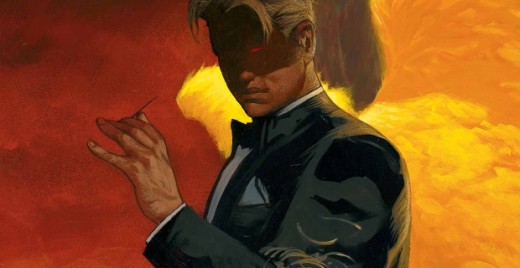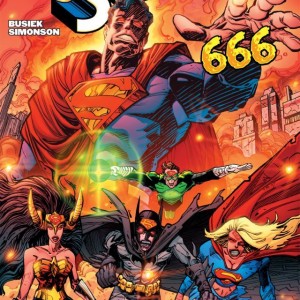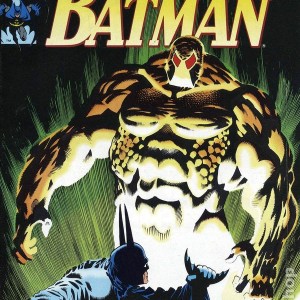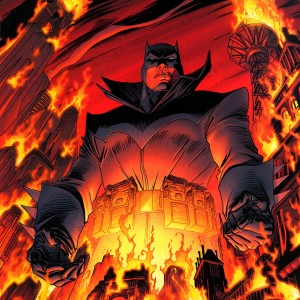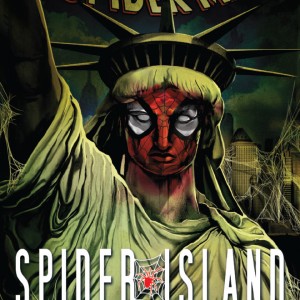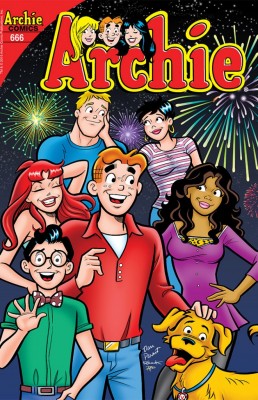IN DEPTH: Issue #666 in Comics
The Marked One—A Look on Selected Comics with Issue Number 666
For Christians and probably to the rest of the Western world, the number 666 is the mark of the “beast”. That number gives chills to the faithful and worshippers. It also provides fear to another level. The symbolisms behind it are numerous. It usually points to Lucifer aka The Fallen One, Anti-Christ, The Morning Star, and of course, The Beast. Essentially, that one originated from the Bible, New Testament in the Book of Revelation, mentioning the arrival of the Anti-Christ whose number is the indicator or clue.
In comics, that infamous number is referenced a lot. In Neil Gaiman’s Sandman, we witness Lucifer and his dark realm. Eventually, he got bored and personally left the keys of the gates of Hell to Morpheus, the series’ main protagonist. In the spin-off named, well, Lucifer, we watch the former overlord of Hell in his newfound gig in Earth itself! Garth Ennis’s sacrilegious Preacher cites so many citations regarding the Fallen One and even the series ended in Preacher #66 in 2000. In Grant Morrison’s The Invisibles where that number was used a number of times in connection to the impending doom of times that the team tried in vain to prevent. 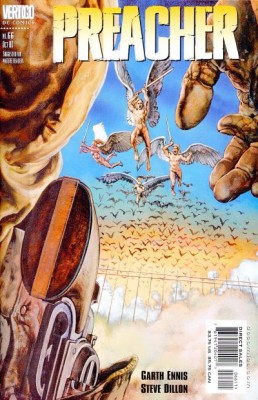 Jim Lee’s Wildstorm publishing imprint released its company-wide event named “Number of the Beast” which a hidden threat emerged to start the long-awaited apocalypse that would lead to the destruction of Earth later on.
Jim Lee’s Wildstorm publishing imprint released its company-wide event named “Number of the Beast” which a hidden threat emerged to start the long-awaited apocalypse that would lead to the destruction of Earth later on.
How about comics that have the issue #666? Examples of these are Action Comics #666, Adventures of Superman #666, Detective Comics #666, Batman #666, Amazing Spider-Man #666, and recently, Archie Comics #666. Yes, I am not making these up. They are all real and existed. Comics reaching that number are actually rare due to the fact that companies publishing these rely on the readers and fans’ dedication to the titles themselves. Seriously, we are talking more than thirty or more years to reach that “milestone”. In addition, DC and Marvel in particular, took advantage of that “insidious” aura to the point of making stories that are directly (or otherwise) true to the malevolent essence behind that infamous number. That brings me to the main inquiry: Do they have the stories directly connected to the Prince of Evil, the “666” numerical tone, and the “hellish” time the series’ protagonists must confront, and eventually win (or lost)? Let’s enumerate these single issues.
Action Comics #666 was written by Kurt Busiek and illustrated by Walt Simonson. The cover art by Simonson speaks volume: Superman in Hell, his face is obviously possessed, and the “666” is truly emphasized for maximum effects. Literally, the creative team had a grand time exploring the “demonic” side of the Man of Steel and how he operated the dark realm. It was bleak, very depressing to read, and virtually sacrilegious to the symbol of hope, justice and the American dream. The good news is this issue is non-canon, a somewhat an “else-world” scenario. And, Simonson’s illustrations are not for everyone’s cup of tea. If only this issue coincided with the Death of Superman storyline, perhaps this would be more memorable and done more beautifully than what was supposed to be. Yet, this one occurred a few years BEFORE the said mega-storyline event. Thus, this comic can be judged as a standalone.
Next one is Detective Comics #666. This one is an integral chapter (18th) of the mega-Batman event called KNIGHTFALL. Knightfall took place after the Death of Superman event and it chronicled the rise of the new villain named Bane by breaking the vertebrae of Bruce Wayne. A successor must take the mantle of the Bat, and Jean Paul Valley or Azrael was Wayne’s personal choice. The cover art by Graham Nolan is very ominous: Azrael-Batman was bending against the towering Bane. This was Jean’s second confrontation against Bane but first as the new Dark Knight. Written by Chuck Dixon, Bane almost outclassed the new replacement that served as a cliffhanger to the conclusion of the saga in Batman 500 (different topic). This one had virtually had neither allusions of being apocalyptic nor the end of humanity obviously. If one possesses a large imaginative mind and interprets this action-packed chapter to squeeze out “demonic” references out of this one; then Bane was the reigning Anti-Christ who ruled Gotham after he did the impossible. Jean Paul Valley could be imagined as the Fallen Angel due to his lethal and brutal approaches that were the exact opposite to Bruce’s philosophy. And, Bane compared himself as the “demon” or “devil”, as the title “The Devil You Know” says it best. In short, this issue utilized some symbolisms, but maintained a worldly or secular approach.
That approach was a bit similar in Amazing Spider-Man #666 by Dan Slott and Stefano Caselli. That one served as the prelude to another storyline event, Spider-Island. Simply put, Spider-Man’s powers were somehow accidentally scattered across New York City. So imagine Mary Jane Watson, Luke Cage, Jonah Jameson, Aunt May and almost all residents of New York City had the incredible arachnid powers Peter Parkers solely possesses! What was so bleak here? The face of the Statue of Liberty in the cover art was literally Spider-Man, while the background was dark and littered with spider webs to signify the arrival of the dreaded phenomenon. Aside the infamous number, there were less allusions of being demonic, hellish and apocalyptic as this prelude served its purpose of tantalizing the readers and fans of what’s in store for the Spider-Island event.
With the possible exception of the first example, Batman #666 by Grant Morrison and Andy Kubert actually tops all issue #666 comics because it was the standalone story of the Batman-Damian Wayne in the unforeseeable future. As teased in the previous issue (number 665), Morrison fulfilled the promise of making this tale as symbolically and literally as hellish, demonic and pure Morrison-esque reading experience. Well, the name “Damian” is often associated with the devil or being the son of the devil. The bat was once associated as one of the creatures of the night, again connected to the Dark Lord. Damian’s grandfather is no other than Ra’s Al Ghul, often symbolized as the living devil. In that issue, Damian failed to save his old man and succeeded him. He made a “pact” with the devil to make him more powerful to protect Gotham City further. He would even made Gotham a living weapon to combat crime. The cover art by Kubert further illustrates the seriousness of the tone—Damian-Batman in the midst of brimstone and sulfuric fires and flames that speaks volumes on the apocalyptic version of Gotham City would be, sooner or later. Damian had to deal with the Gotham City Police Department under the commission of Barbara Gordon. A powerful threat wants to annihilate Gotham to dust, and of course, Damian saved the day by delaying the impending “apocalypse” or “judgment day” to the commissioner. Further explorations of the future Batman are highlighted in Batman Inc (volumes one and two). This issue is as hellishly dreadful as it gets!
Finally, Tom Defalco’s Archie Comics #666 officially marks the end of the long-running Archie Comics continuity. For obvious reasons, there is virtually nothing to bleak upon. This finale is a true celebration of what an Archie comic should be: optimistic, cheerful, positive, bouncy, funny, heartwarming, and lots of joyfulness. Only two things are emphasized here, the word “end” and the “666” detentions the main protagonist committed. The story started a bit anxiously but mostly progressed positively towards a comedic (plus optimistic) and fun panel.
As presented and wrapping up, there are definitely few comics that reached the issue #666. Virtually all of them are mainstream comics, namely Marvel and DC. With the exception of the last issue of Archie Comics, Amazing Spider-Man #666, Action Comics #666, Batman #666 and Detective Comics #666 utilized the significance directly or indirectly the depressing and pessimist nature the number alludes and symbolizes. As shown in both Amazing Spider-Man #666 and Detective Comics #666, they didn’t show an apocalyptic or a hellish existence. Rather, an imagery of “demon” or the harbinger of the portent event looms dominantly to synchronize the on-going storyline comic events. The rest are direct homage to the religious or supernatural forces and symbolisms connected to that infamous mark. Iconic characters become the very symbols of the Beast, including their respective domains. That’s the power of the BEAST! Even in the age of secularity, religious tolerance and the rise of atheism/agnosticism, that number still invokes the negative mysticism that many creative minds in the visual medium and other areas of pop culture apply to their respective writing or creative tasks.

